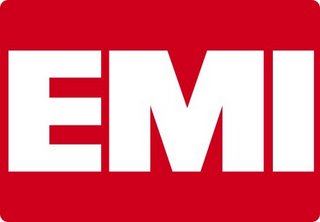da Folha Online, em Brasília
Com a presença de centenas de empresários, o presidente Luiz Inácio Lula da Silva sancionou hoje a Lei Geral das Micro e Pequenas Empresas. A expectativa do governo é que a lei permita a criação ou formalização de 1 milhão de empresas e, com isso, a geração de 2 milhões a 3 milhões de empregos formais.
Conhecido como Supersimples, a lei estabelece um regime tributário diferenciado que prevê a unificação e simplificação de seis impostos e contribuições federais (IRPJ, PIS, Cofins, IPI, CSL e INSS), além do ICMS (Estados) e ISS (municípios), para as micro e pequenas empresas que faturam até R$ 2,4 milhões por ano.
As alíquotas nesse sistema variam de acordo com o faturamento da empresa e vão de 4% a 11,61% no comércio. Há acréscimos para as indústrias (meio ponto percentual) e para as empresas do setor de serviços --50% a mais do que é cobrado do comércio.
Um acordo no Congresso permitiu que a parte tributária da lei tenha início apenas em 1º de julho de 2007. Com isso, a renúncia fiscal prevista para R$ 5,4 bilhões ao ano deve cair pela metade em 2007. Os demais artigos da lei entram em vigor a partir da de 1º de janeiro, apesar de ainda existirem itens que ainda dependem de regulamentação posterior.
A postergação da parte tributária ocorreu porque Estados e a Receita Federal alegaram que não haveria tempo hábil para desenvolver o sistema de arrecadação.
Além da parte tributária, a lei também simplifica o processo de abertura das empresas e lhes dá preferência na participação de licitações públicas de até R$ 80 mil. Também permite que autônomos façam um recolhimento menor ao INSS (Instituto Nacional do Seguro Social).
Para a CNI (Confederação Nacional da Indústria), a lei garante um melhor ambiente de negócios no país para as micro e pequenas empresas.
'É um marco amplo que aponta para a criação de um ambiente mais favorável ao desenvolvimento das micro e pequenas empresas. Ela contempla desburocratização, simplificação e desoneração tributária. Então, é algo que corresponde a um avanço', disse Armando Monteiro Neto, presidente da entidade.
No entanto, Monteiro Neto afirmou que o ideal é que todas as empresas pudessem ter um ambiente melhor.
Para as entidades que representam esse grupo de empresas, o desafio agora é fazer com que a lei seja de fato implementada.
"Com a sanção, encerra-se o ciclo da luta pela Lei Geral e abre-se um novo, o de implementação, descortinando uma agenda de trabalho extremamente desafiadora para o Sistema Sebrae e para os empresários, que é fazer com que essa lei chegue às micro e pequenas empresas de todos os municípios brasileiros", ressalta o gerente de Políticas Públicas do Sebrae Nacional, Bruno Quick.
O presidente Luiz Inácio Lula da Silva sancionou hoje a Lei Geral das Micro e Pequenas Empresas, que garante um regime tributário diferenciado para as microempresas, que são aquelas que faturam até R$ 240 mil por ano, e para as pequenas empresas, com receita de até R$ 2,4 milhões.
A unificação e simplificação tributária, um dos principais pontos do projeto, passará a vigorar apenas no dia 1º de julho. O restante da lei passa a vigorar a partir do dia 1º de janeiro com exceção de itens que ainda dependem de regulamentação posterior.
A expectativa do governo é que a lei permita a criação ou formalização de 1 milhão de empresas e, com isso, a geração de 2 milhões a 3 milhões de empregos formais. Veja abaixo os principais pontos da lei:
Tributação
Unifica e simplifica a arrecadação de seis impostos e contribuições federais (IRPJ, PIS, Cofins, IPI, CSL e INSS), além do ICMS (Estados) e ISS (municípios) a partir de 1º de julho. A renúncia fiscal prevista é de R$ 5,4 bilhões ao ano.
Alíquotas
No comércio, as alíquotas variam de 4% a 11% de acordo com o faturamento. Há um acréscimo de meio ponto percentual para as indústrias. No caso das micro e pequenas empresas do setor de serviços, as alíquotas são 50% maiores que as cobradas no comércio.
Compras públicas
As micro e pequenas passam a ter prioridade em compras governamentais de até R$ 80 mil.
Menos burocracia
A Lei Geral garante maior rapidez na abertura de empresas. Os documentos serão entregues em um único órgão que repassará os dados para os outros. O registro da empresa será único e servirá para todas as esferas de governo. A parte de fiscalização ambiental, de segurança e sanitária será feita de forma simplificada.
Autônomos
A Lei Geral permite que autônomos façam um recolhimento de apenas 11% para o INSS (Instituto Nacional do Seguro Social). Alíquota hoje é de 20%. No entanto, o trabalhador poderá se aposentar apenas por idade (60 anos para mulher e 65 para homens), e não por tempo de contribuição.
Novos setores
A Lei Geral como foi aprovada no Congresso permite que novos setores entrem no sistema de arrecadação especial. Entre eles estão os operadores autônomos de transportes de passageiros, as empresas de montagem de stand em feiras, escolas de línguas, academias de ginástica e de dança e empresas que atuem na área de produção cultural e cinematográfica.
Estados
Há uma regra específica para os Estados que tenham participação de até 1% do PIB (Produto Interno Bruto) do país -- AC, AL, AP, MA, PB, PI, RN, RO, RR, SE e TO. Eles podem optar por adotar apenas a faixa de faturamento de até R$ 1,2 milhão. Para as demais faixas, o ICMS ou o ISS será recolhido normalmente
Nos Estados com participação entre 1% e 5% no PIB nacional, há a opção pela adoção apenas das faixas de receita bruta até R 1,8 milhão. Essa regra vale para AM, BA, CE, DF, GO, ES, MT, MS, PA, PE e SC.
